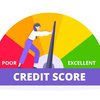What Does ROI Mean in Real Estate Investing?

Return on Investment (ROI) is a fundamental metric in real estate investing. It is a percentage that tells you how much profit you make from your investment relative to how much you spend. In real estate, ROI helps you determine whether a property is worth buying, holding, or selling.
Some of the key decisions ROI helps support in real estate include:
- Comparing two or more investment properties
- Evaluating the effect of different financing structures
- Analyzing the impact of renovations or rent increases
- Setting benchmarks for portfolio performance
Assessing how efficiently your money is being used to generate returns can support better decision-making about property acquisitions, sales, and long-term strategy.
How Do You Calculate ROI on an Investment Property?
The basic formula used to calculate the return on an investment is:
ROI = (Net Profit ÷ Total Investment) × 100
Below is an example of a real estate investment and how the formula would be applied in that scenario:
- Purchase Price : $500,000
- Down Payment : $100,000
- Annual Rental Income : $36,000
- Annual Expenses (maintenance, taxes, etc.): $16,000
- Net Profit : $20,000 ($36,000 - $16,000)
ROI = ($20,000 ÷ $100,000) × 100 = 20%
What’s the Difference Between Gross ROI and Net ROI?
Gross ROI and Net ROI are two ways of evaluating the performance of a real estate investment, but they tell very different stories. Gross ROI provides a high-level look at potential returns before accounting for expenses, making it a useful tool for quick comparisons. Net ROI on the other hand only looks at profits and includes all costs related to the investment.
| Metric | Formula | Use Case |
|---|---|---|
| Gross ROI | (Annual Income ÷ Property Cost) × 100 | Quick snapshot |
| Net ROI | (Net Profit ÷ Total Investment) × 100 | Deeper profitability analysis |
Example:
- Gross ROI: ($36,000 ÷ $500,000) × 100 = 7.2%
- Net ROI: ($20,000 ÷ $100,000) × 100 = 20%
As you can see, while a property might appear attractive on a gross ROI basis, the net ROI can tell a very different story once you factor in expenses.
What Are the Main Expenses You Must Include in ROI Calculation?
Calculating an accurate ROI means accounting for all the expenses associated with the property. These costs can significantly affect your profit margins and give you a more realistic picture of your investment’s performance.
Cost Checklist:
- Property Taxes
- Maintenance & Repairs
- Insurance
- Utilities (if paid by owner)
- Property Management Fees
- Vacancy Allowance
- Mortgage Interest
- Legal & Closing Costs
- Capital Expenditures
What Is a Good ROI on an Investment Property in Canada?
ROI can vary widely by market conditions, property type, and investment strategy. It's important to assess whether the return justifies the risk and effort involved in the specific market you're targeting.
- 6–8%: Acceptable for stable markets
- 8–10%+: Strong return
- 10–15%+: High-performing investment
Examples:
- Toronto Condo: 5-7% (lower ROI, higher appreciation)
- Edmonton Duplex : 9-12% (higher cash flow)
How Does Location Affect ROI on Investment Properties?
Location significantly influences rental income and appreciation potential. Properties in high-demand urban areas often have lower rental yields due to higher purchase prices but may benefit from strong long-term appreciation.
On the other hand, rural or emerging suburban markets may offer higher rental yields and lower acquisition costs, but with slower or less predictable value growth.
| Location Type | Average ROI | Notes |
|---|---|---|
| Urban | 5-8% | High demand, high cost |
| Suburban | 6-10% | Balance of affordability and yield |
| Rural | 8-12% | Lower cost, less demand risk |
Canadian City Rankings (Average ROI):
- Canada: ~5.5%
- Edmonton: ~7–8%
- Calgary: ~6.7–8.8%
- Toronto: ~5.5 – 5.8%
- Vancouver: ~4.2–5.5%
How Do Appreciation and Cash Flow Impact ROI Over Time?
While cash flow provides regular income, appreciation builds long-term equity in the property. Investors who focus only on one component may overlook the full picture of their investment’s return potential.
- Cash Flow : Monthly rental income after expenses
- Appreciation : Increase in property value over time
Here is an example that demonstrates how both factors are accounted for in ROI calculations.
- $100,000 Initial Investment
- $20,000 annual cash flow
- 5% property value growth = $25,000 in equity
- Total Return: $45,000
- ROI = 45%
What Tools or Calculators Can Help with ROI Calculations?
Using a calculator helps remove the guesswork and ensures you're considering all relevant variables. It’s especially valuable when comparing multiple properties or running different investment scenarios.
Useful tools include:
- Microsoft Excel
- WOWA.ca Rental Property Calculator
- Calculator.net Rental Property Calculator
- HelloSafe Canada Rental Property Calcuator
How Do You Determine ROI on a Property with Mortgage Financing?
When using a mortgage, calculate based on your actual cash investment: This means considering only the money you personally put into the deal, such as the down payment and closing costs, rather than the full purchase price of the property.
Leveraged properties can produce higher ROI percentages because your initial investment is smaller, but it's important to also factor in debt servicing costs like interest payments, which affect your net income.
- Down Payment = $100,000
- Mortgage Payments = $18,000 annually (interest portion = $12,000)
- Net Income = $36,000 - $16,000 (expenses) - $12,000 (interest) = $8,000
- ROI = ($8,000 ÷ $100,000) × 100 = 8%
What Is the ROI Difference Between Short-Term Rentals and Long-Term Tenants?
The type of tenant you choose has a direct impact on your investment’s ROI.
Short-term rentals, such as Airbnb listings, often yield higher gross income but come with added operational complexity and costs.
Long-term rentals offer stability and less day-to-day management, though they usually generate lower monthly returns.
| Type | Pros | Cons | ROI Potential |
|---|---|---|---|
| Short-Term | Higher income, flexible pricing | High turnover, more management | ~10-20% |
| Long-Term | Stable income, less work | Lower rates, long vacancies risk | ~6-10% |
What’s the Highest ROI Strategy in Real Estate?
Before diving into specific strategies, it's important to understand that higher ROI often comes from value-added or creative investing approaches. These methods typically require more effort, expertise, or capital upfront but can yield substantial returns when executed correctly.
Here are three of the most popular high-ROI strategies in Canadian real estate:
-
BRRRR (Buy, Renovate, Rent, Refinance, Repeat)
- This strategy involves purchasing undervalued properties, renovating to boost value, renting them out for steady income, refinancing to pull out equity, and repeating the process. It allows investors to recycle their capital quickly.
- High ROI through forced appreciation
- Requires strong market knowledge
-
Fix-and-Flip
- Fix-and-flip investors buy properties below market value, renovate them, and
sell them at a profit
. While potentially lucrative, success depends on tight timelines and accurate cost forecasting.
- Quick profit from resale
- High risk if market dips
-
Multi-Unit Rentals
- Owning duplexes, triplexes, or apartment buildings provide consistent income from multiple tenants, spreads vacancy risk, and offers operational efficiencies in property management.
- Economies of scale
- Strong cash flow, diverse tenant base
How Can Clover Mortgage Help You Analyze ROI Before Investing?
We offer:
- Personalized mortgage consultation
- ROI and cash flow projections
- Pre-approval support and financing strategies
Our tools help you:
- Understand ROI scenarios
- Compare properties side-by-side
- Identify the best mortgage structure for your strategy
If you're ready to explore your own investment opportunities, reach out to a Clover Mortgage broker today. We’ll help you analyze potential ROI, compare financing scenarios, and find a mortgage solution that aligns with your real estate goals.
Conclusion: How to Use ROI as a Smart Property Investor
ROI is more than a number — it's your financial compass in real estate investing. Whether you're buying your first rental property or scaling up your portfolio, always calculate ROI to:
- Compare investment options
- Evaluate financing impact
- Forecast profitability and growth
Use this quick checklist to ensure you're making smart, informed decisions before investing in a rental property. These steps can help you avoid surprises and keep your returns on track:
- Identify total upfront investment (down payment + closing costs)
- Estimate monthly rental income and vacancy rate
- List all recurring expenses (taxes, insurance, maintenance)
- Calculate both gross and net ROI
- Factor in appreciation and loan principal paydown
- Use ROI calculators to model different scenarios
- Compare ROI across multiple properties or strategies
- Consult a mortgage specialist for financing optimization
FAQ
What is a good ROI in real estate investing today?
A good ROI in real estate depends on your location and risk tolerance. In most Canadian markets, 6-10% is considered solid, while 10-15%+ is strong for cash-flow-focused investors.
How is ROI different from cap rate in real estate?
Cap rate is calculated as Net Operating Income ÷ Property Value, and does not consider financing. ROI includes your actual out-of-pocket investment and financing costs.
What’s the best way to track ROI over time?
Spreadsheets and custom dashboards are excellent tools for tracking ROI performance over time. They allow investors to monitor changes in equity, track monthly income and expenses, and evaluate long-term performance trends, all of which are critical for making data-driven decisions and adjusting strategy as needed.



